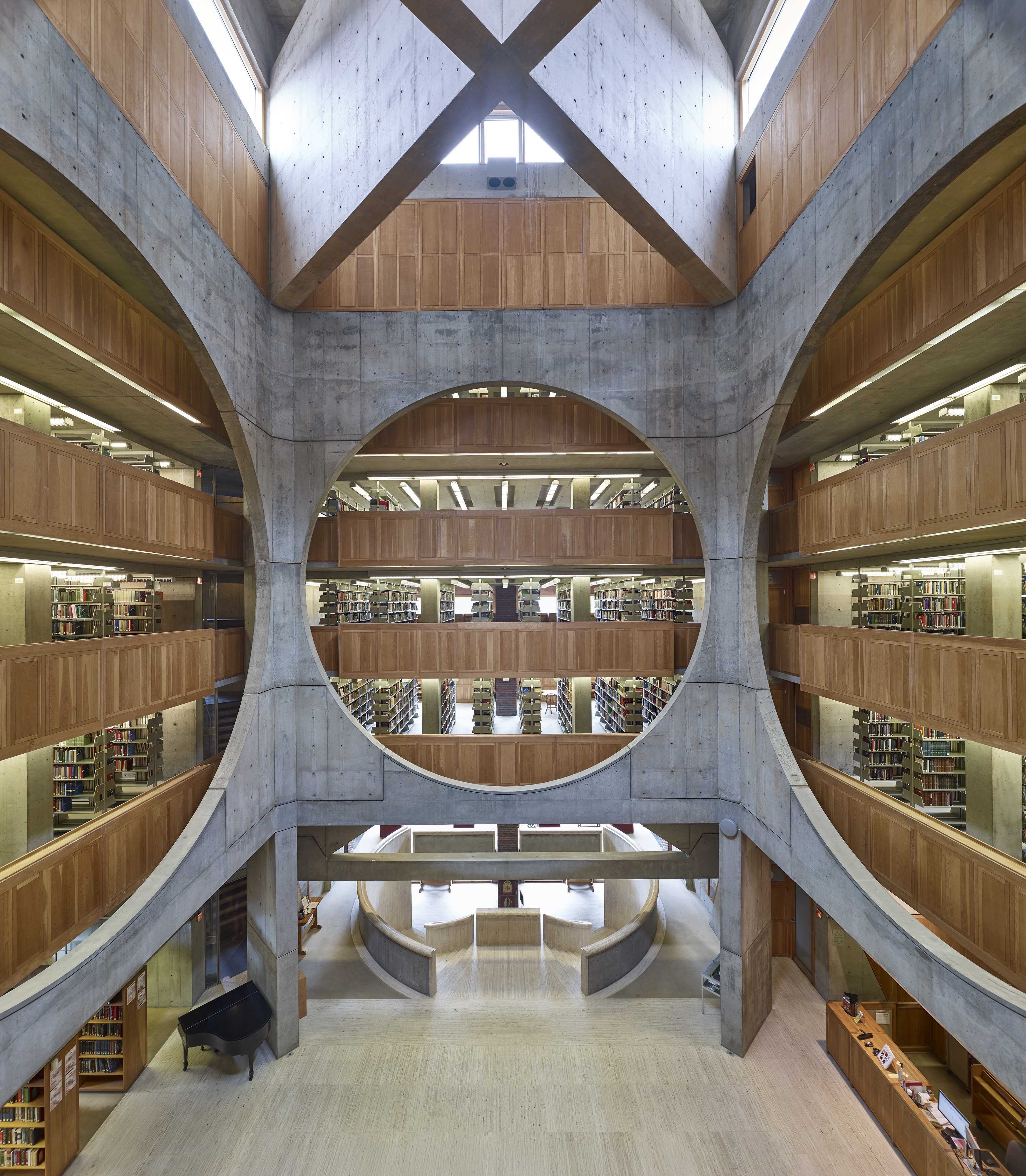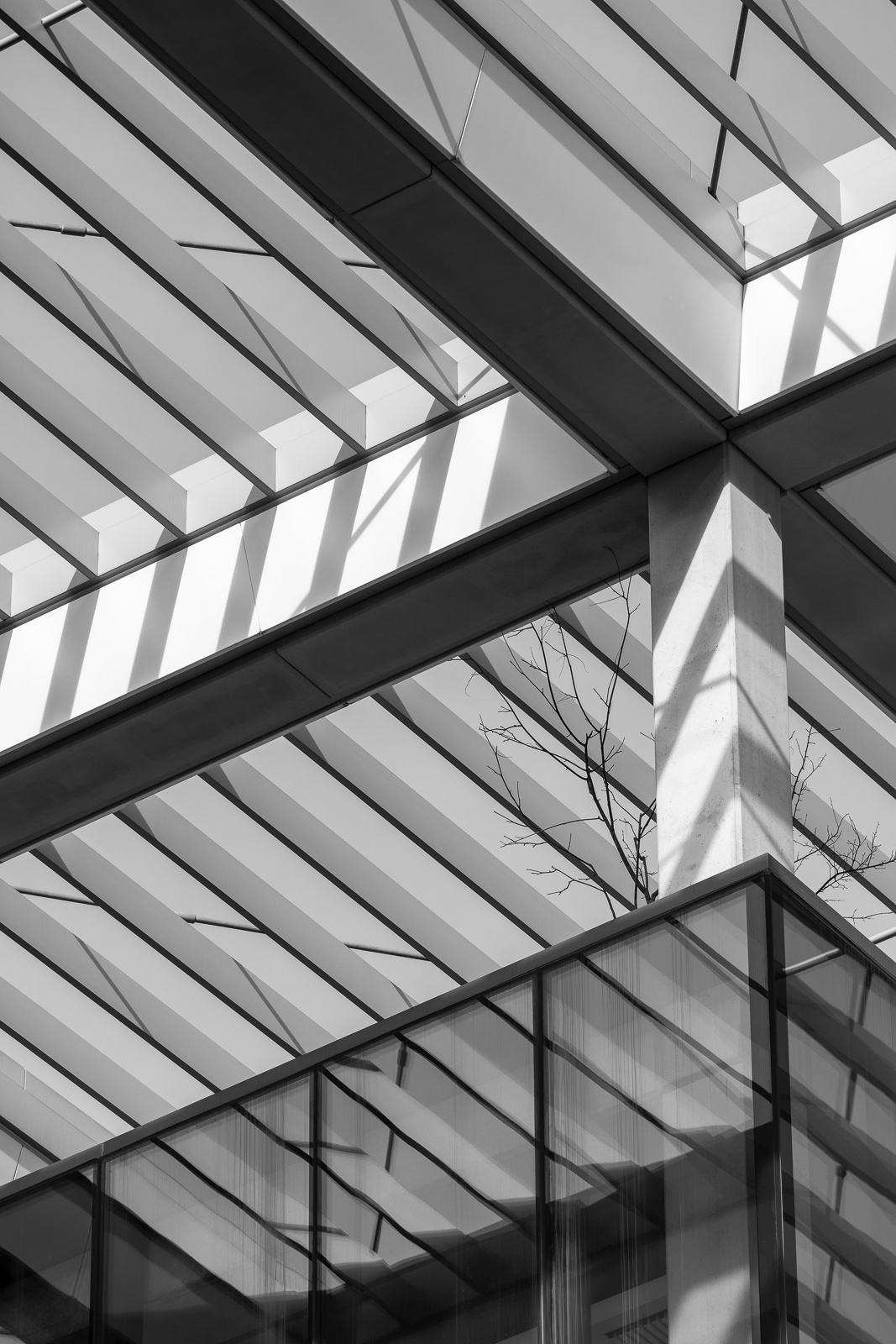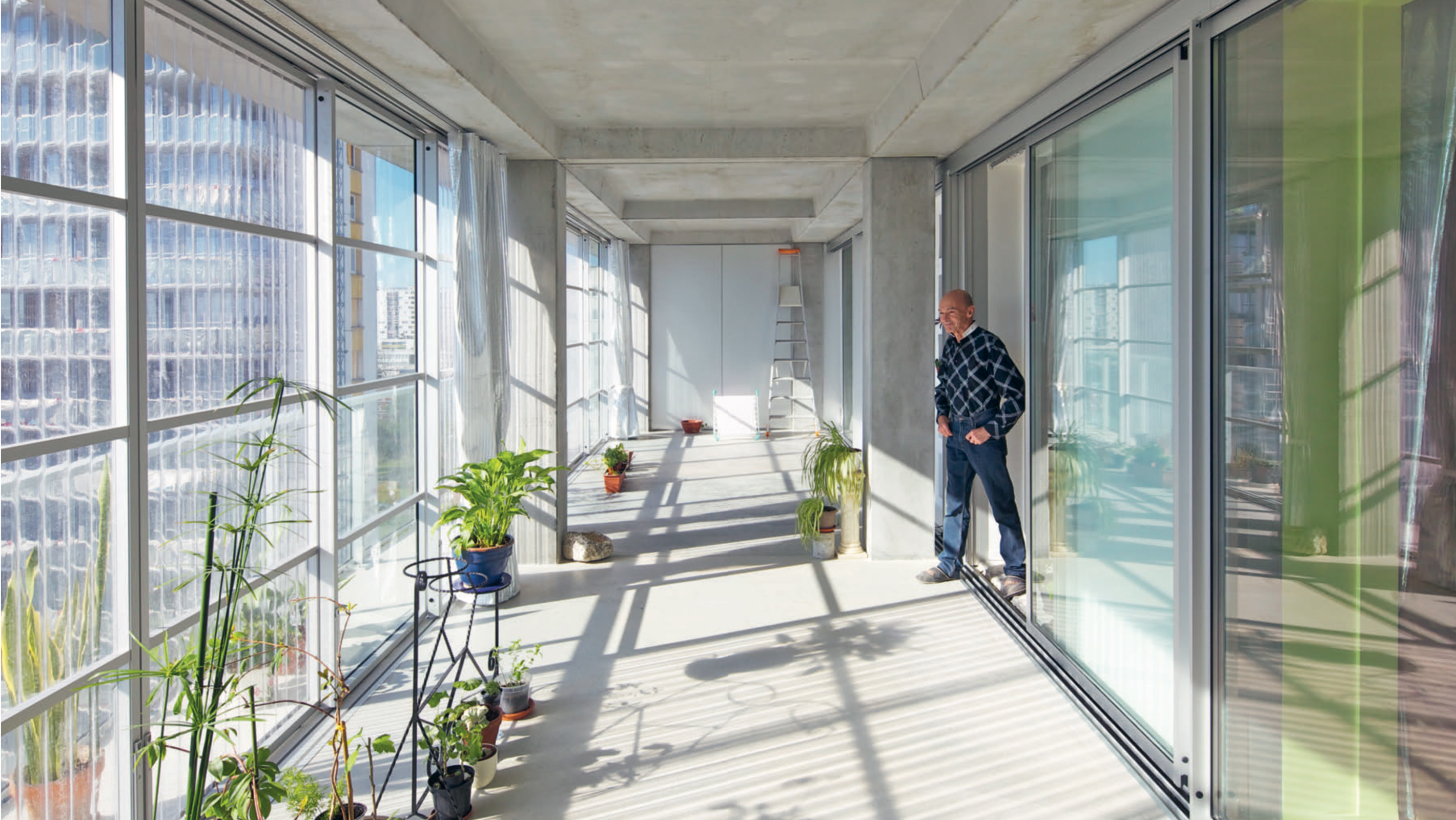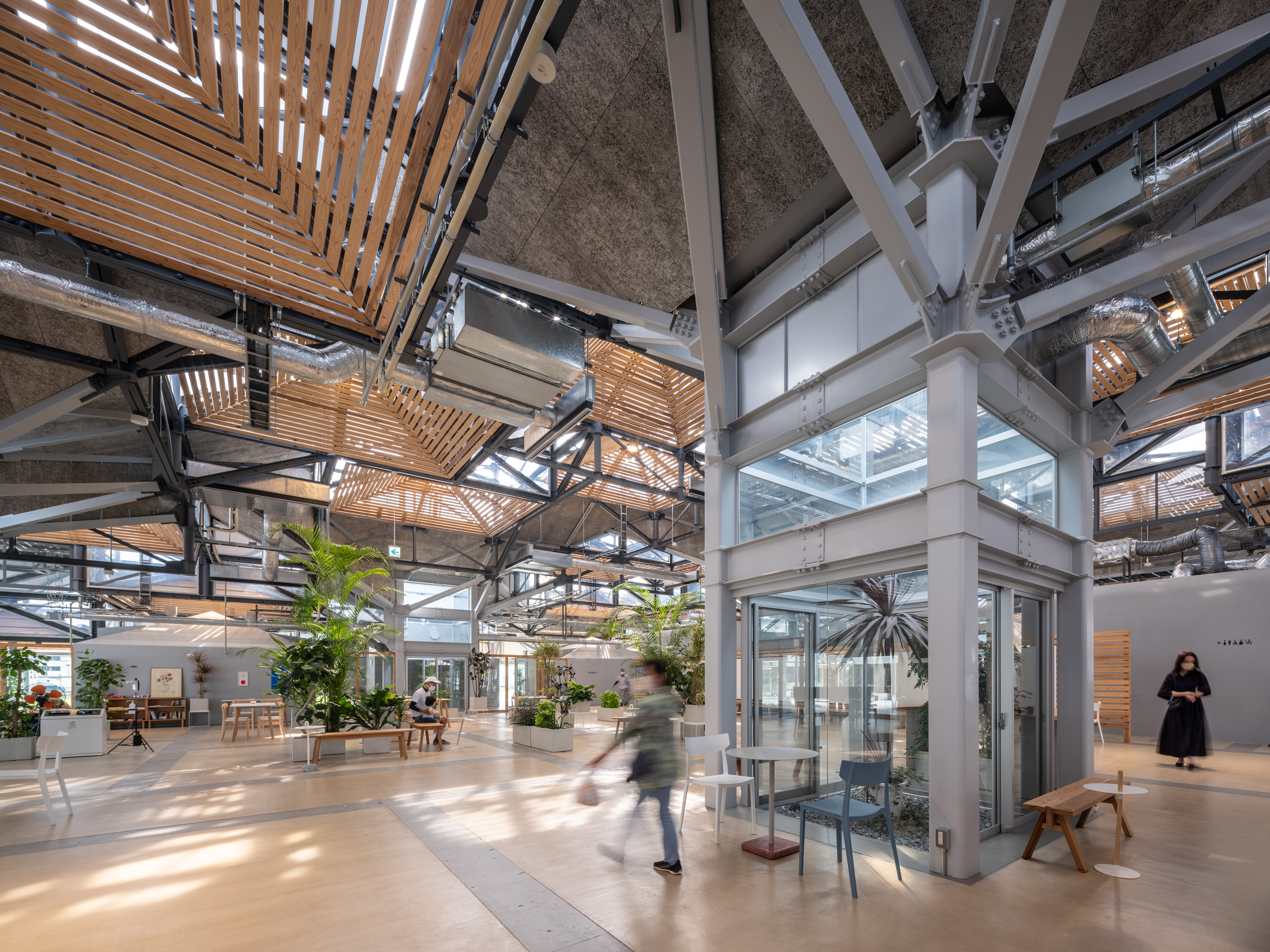The Secret Life of Light
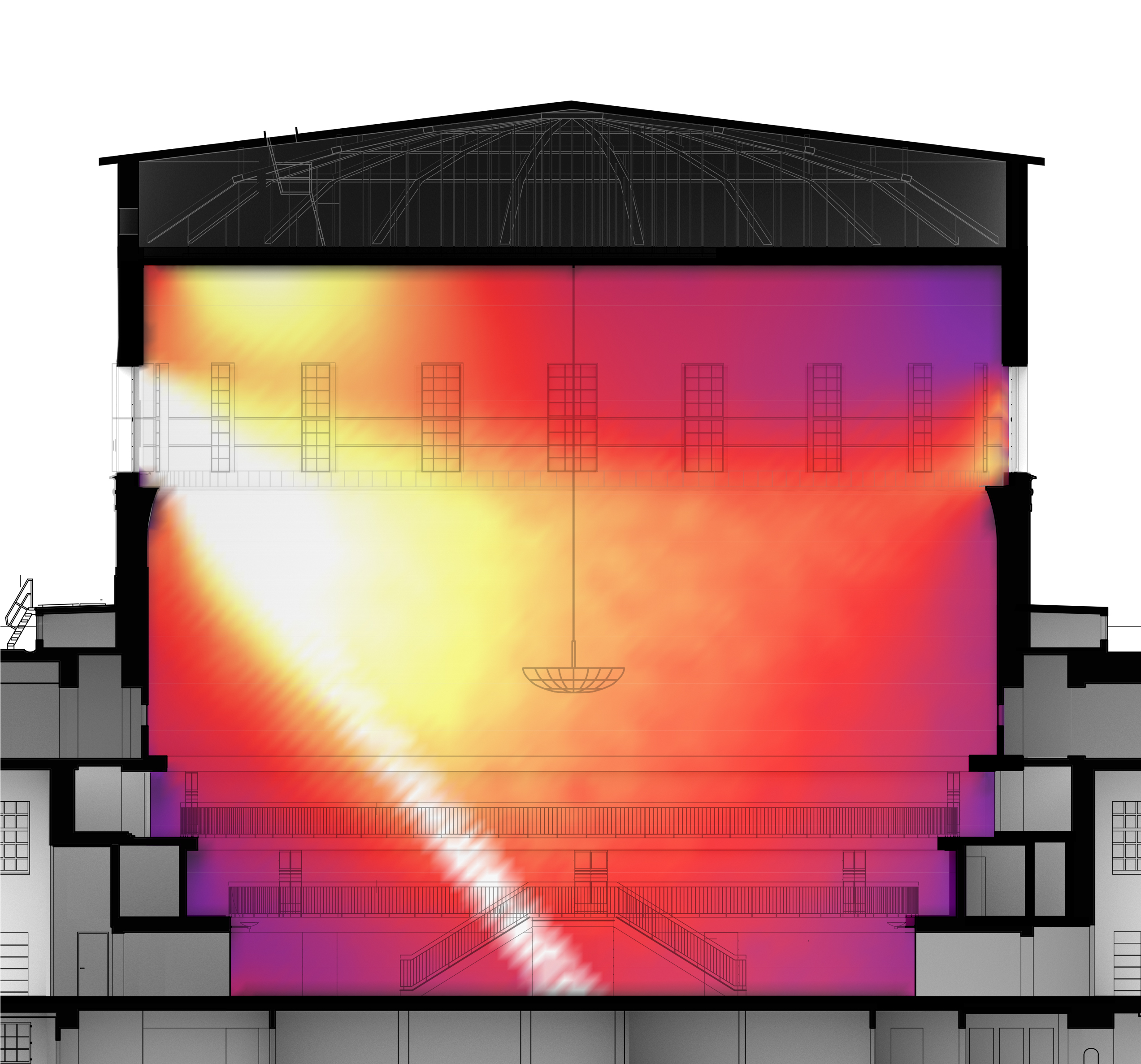
Category
Daylight
Daylight & Architecture
Author
Paul Rogers, Head of daylight certification at ACC Glass and façade consultants
Date
August 2023
Share
Copy
The architect, Louis Kahn, is quoted as saying, “A room is not a room without natural daylight.” Indeed, natural light’s central role as form giver is a constant theme in architectural theory of the modern era. The basic physics is that light can be emitted, transmitted, absorbed, or reflected. As it pertains to architecture, it is when light contacts a surface that it is of interest. But there is a backstory here as well. Before light can give birth to architectural form, it must pass through space. This journey is invisible to the naked eye. But just as architecture is defined by light, light itself is transformed by its interactions with architectural form. It is just this silent unseen passage of light through air which we will examine here. This discussion will be based on results of point-in-time illuminance simulations for four case study buildings: the Pantheon, Gunnar Asplund’s Stockholm Central Library, Alvar Aalto’s Viipuri Library and Gert Wingårdh’s addition to the Liljevalchs Art Gallery.
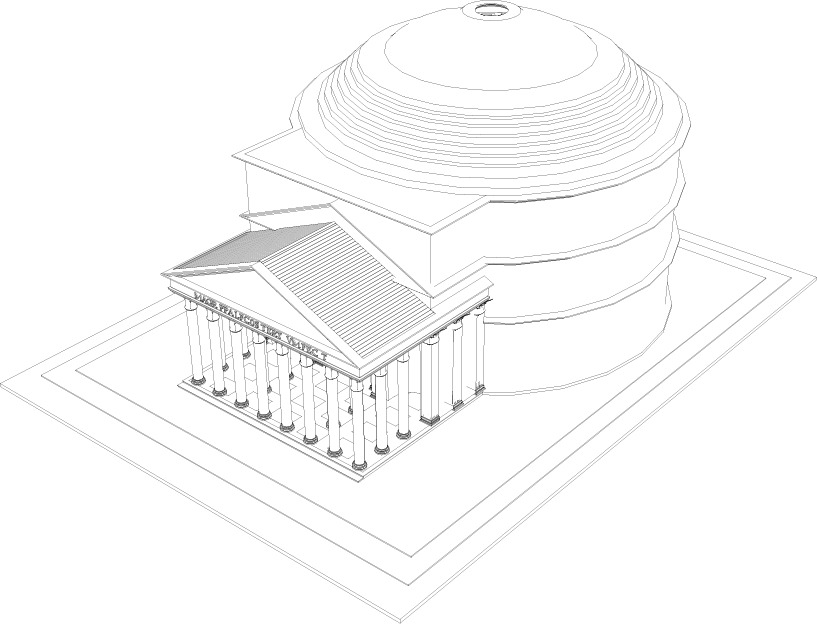
Pantheon (42° Latitude)
The Roman Pantheon could easily be confused with a working sundial. Its architectural pedigree is beyond question but its ability to sculpt direct sunlight into nearly solid form is a unique feature of its resume. Except for a trickle of light through the entry doors, daylight enters the building’s central volume by means of a single circular opening at the top of a dome (the oculus). The width of the oculus is approximately five and a half times its height. The edges of this hole are sharply cut but feature a circular brass cornice with a decorative profile. As the direct rays from the sun pass through this aperture, light is momentarily scattered before eventually regrouping itself into directed light once again. The climax of the story is a well-defined oval shape projected on a vertical wall and, for a few hours of the year, projected on solid ground. This oval of light is of such power that it easily overwhelms minor distortions to its shape resulting from its collision with articulated wall geometry. It is at this point of collision that the balance of power shifts from light to matter. The Pantheon’s decoration and muted colours ensure that any further reflection is diffused and dampened becoming only a footnote to the initial drama. Of particular interest is the seasonal variation in the extent of the diffusion of the direct beam as it enters the building. At noon on midsummer, an explosion of diffuse light extends approximately 35 meters beyond the oculus, whereas at noon on midwinter, the same effect is evident only to a depth of around 20 meters. Though not shown here we can reasonably presume a similar pattern of variation of light distribution occurs also at different times of day. But the main theme is constant; a determined direct beam which loses a small portion of its composure before continuing onwards devoid of regret or retrospection to manifest itself in a single act of clarity. It is unfaltering heroics on display from sunrise to sunset.
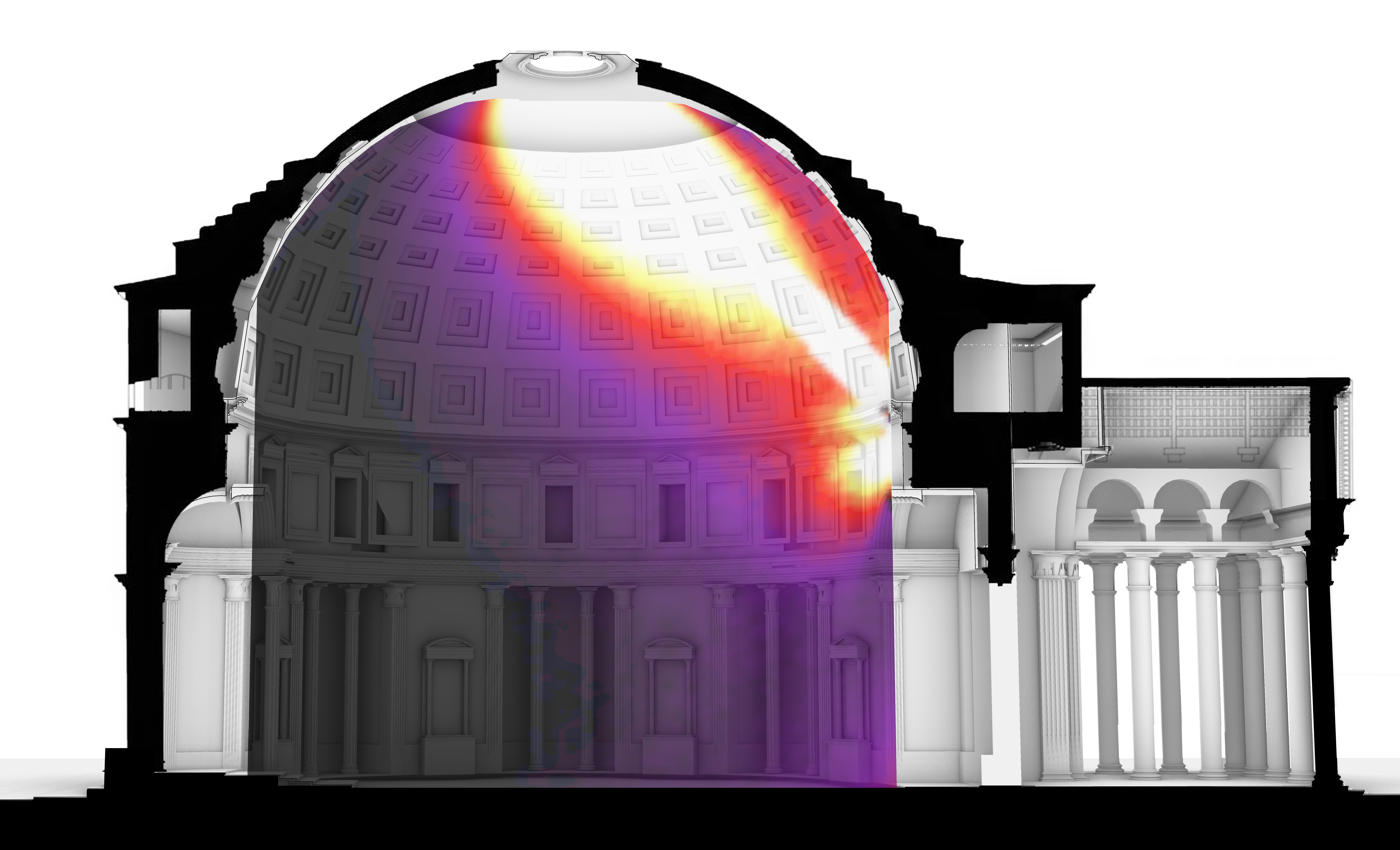
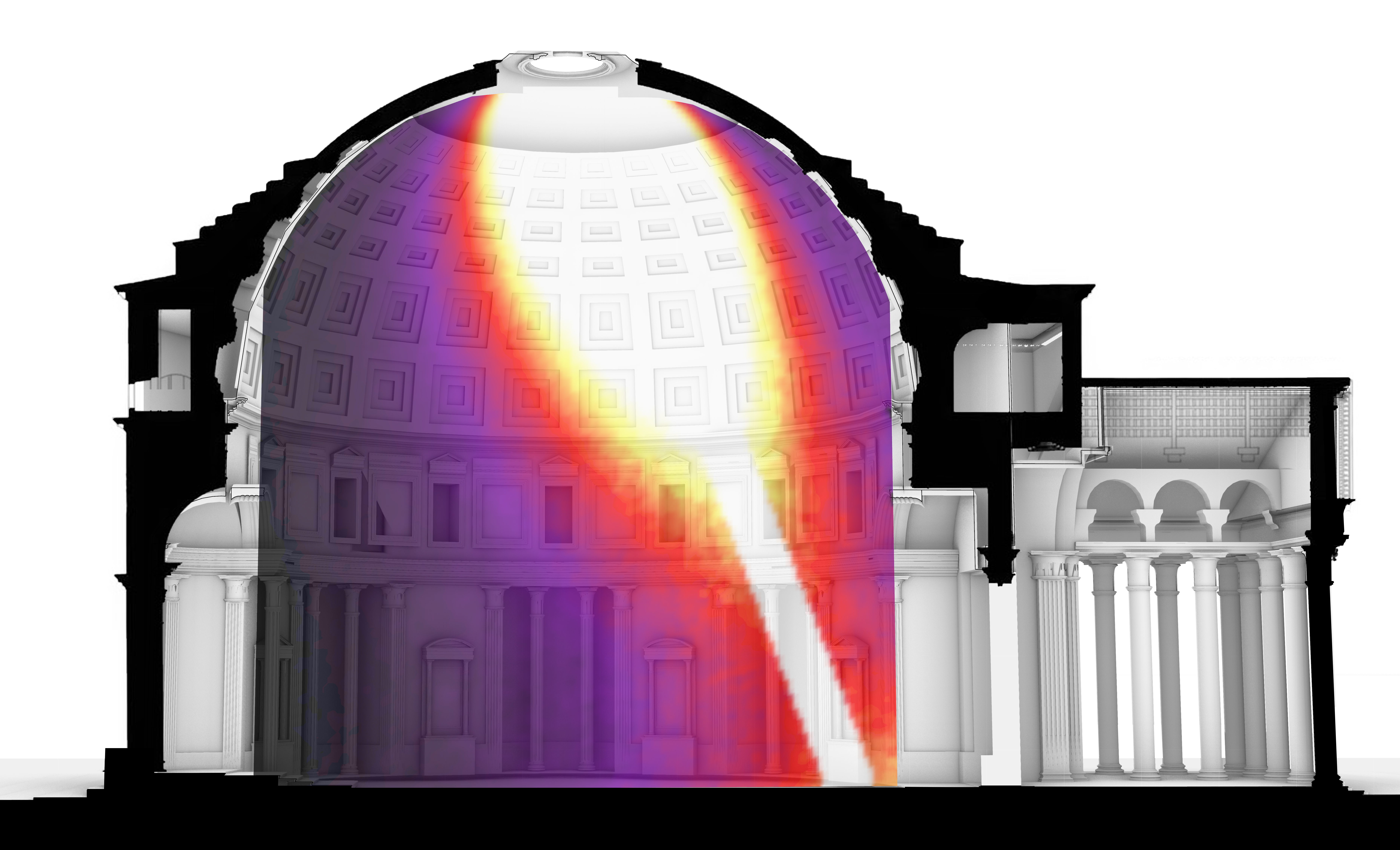

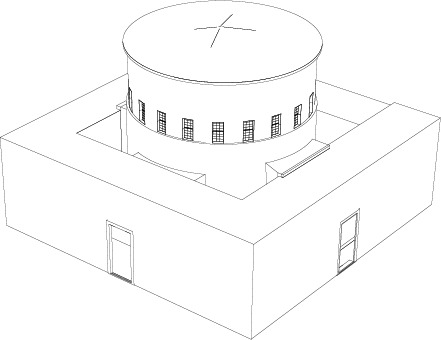
Stockholm Central Library / Gunnar Asplund (59° Latitude)
Whereas the Pantheon has a single horizontal opening, the main hall of Stockholm Central Library has twenty vertical apertures of identical size but varied orientation. This is not a song sung from a single voice, but rather a choir composed of various intensities. Light enters the main hall from multiple directions and, of particular interest, is the way that the distribution of light shifts between apertures. As the sun moves along its daily path, the direct beam essentially passes from one neighboring window to the next in a constant manner with the smoothness of a mechanical clock. It is only with an overcast sky that all apertures have equal voice. When the direct beam is present, one of the apertures, and for a few brief instances two, has a heightened influence on the magnitude and character of light. While all the apertures do receive direct sun at some point during the year, a seasonal bias towards south generally prioritizes the voice of eight of the windows. As the angle of incidence of the direct beam diverges from normal to the window, a greater diffusion of light around the aperture can be expected than is shown in the images. However, for much of the day, the integrity of the direct beam will remain relatively intact as it passes though the volume of the main hall. It is at this point where Asplund’s keen understanding of solar path is demonstrated. Whereas the walls of the Pantheon reduce secondary reflection to a whisper, at solar angles below 18 degrees Asplund’s white rough-hewn plaster walls carefully reflect the beam to the reading space below. There is some diffusion of light as the direct beam meets the wall, but even after this collision the light remains stubbornly directional. This reflection occurs for approximately half of the daylight hours and provides usable light at times when the sun’s rays are relatively weak. With solar altitudes between 18 and 33 degrees, the direct beam reaches the lower third of the room where walls are occupied by bookshelves. This condition occurs for approximately one quarter of daylight hours and though not optimal from a preservation standpoint, gives a gentle diffuse reflection. And then finally with solar altitudes above 33 degrees and in a manner reminiscent of the Pantheon, the direct beam reaches the floor before being absorbed. The result is that, in terms of magnitude of light, seasonal variation is remarkably weak. At noon on the summer solstice, there is around five times the magnitude of light and at equinox around two times the magnitude of light that is available at midwinter. This is an astounding dampening of the seasonal variations we would normally expect at this latitude. In this way, Asplund has further reinforced the theme of a multitude creating a greater whole. Here, no one voice is allowed to drown the others. Here, the beauty of harmony is revealed by means of light.
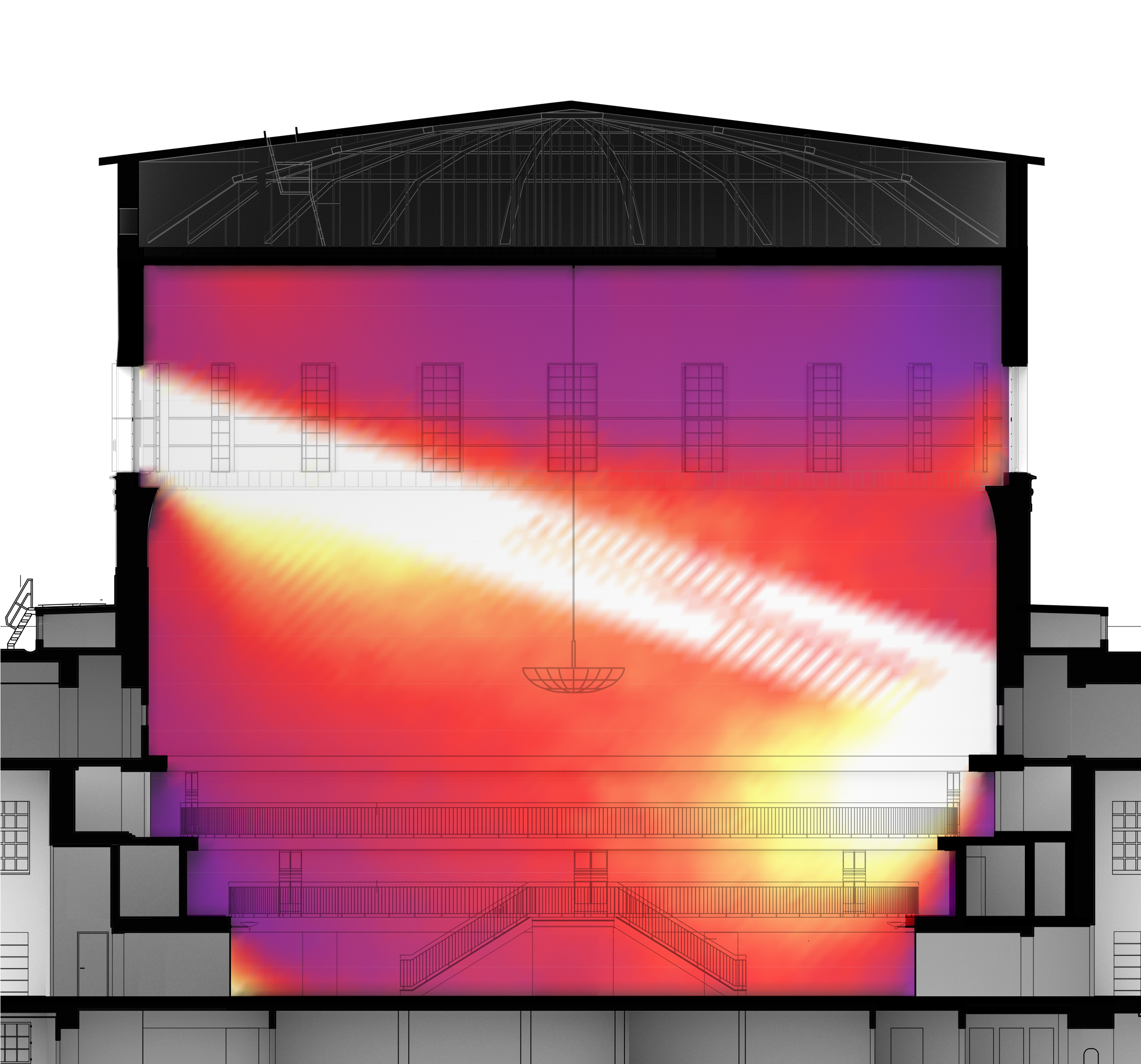


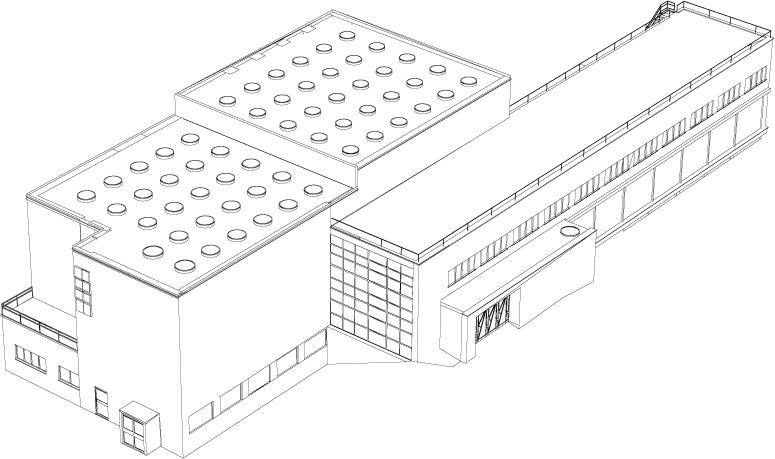
Viipuri Library / Alvar Aalto (61° Latitude)
The architect, Alvar Aalto, is well known for his innovative and masterful use of top lighting. Few architects have experimented with the genre to the same degree. In his essay, ‘Natural and artificial light in Alvar Aalto’s Architecture’, Markku Norvasuo points to the circular skylight as Aalto’s most significant fenestration motif. And it is in the lending hall of the Viipuri library where Aalto has gone full throttle pushing this architectural device seemingly to its limits. The ceiling of the library’s main hall reads as much void as solid. Aalto’s early sketches of the skylight module show an ambition to ban the direct beam and permit only diffuse light to pass. As we can see in the images below, this subjugation of the direct beam is achieved largely by the depth of the aperture. But it is the circular form of each of the skylights that removes the directionality of the light. Gone is the need for the frosted opal glass which we see in other Aalto buildings. Each of the skylights is placed in a rational manner with result being a uniform veil of daylight which permeates the lending hall not just horizontally but is particularly remarkable for its uniform spread throughout the vertical extents of the room. It is only in the first meter below the ceiling where there is notable variation in uniformity. This, regardless of time of the day or season. Here is daylight aspiring to the predictability of artificial light or as Norvasuo adeptly summarizes, “lamp powered by daylight.” It is Apollo on his chariot tamed to play the role of lightbulbs on a dimmer. However, the sun still serves notice of its power by means of a wide variation in the magnitude of light with season and time of day. Seasonal variation is considerable with noon at the summer solstice having around 30 times the magnitude of light and at equinox around 10 times the light of that which is available at noon in midwinter. But there is no other variation here, rather a constant tone repeatedly rising and falling in strength. Here, at any given point of time, is almost pure uniformity.
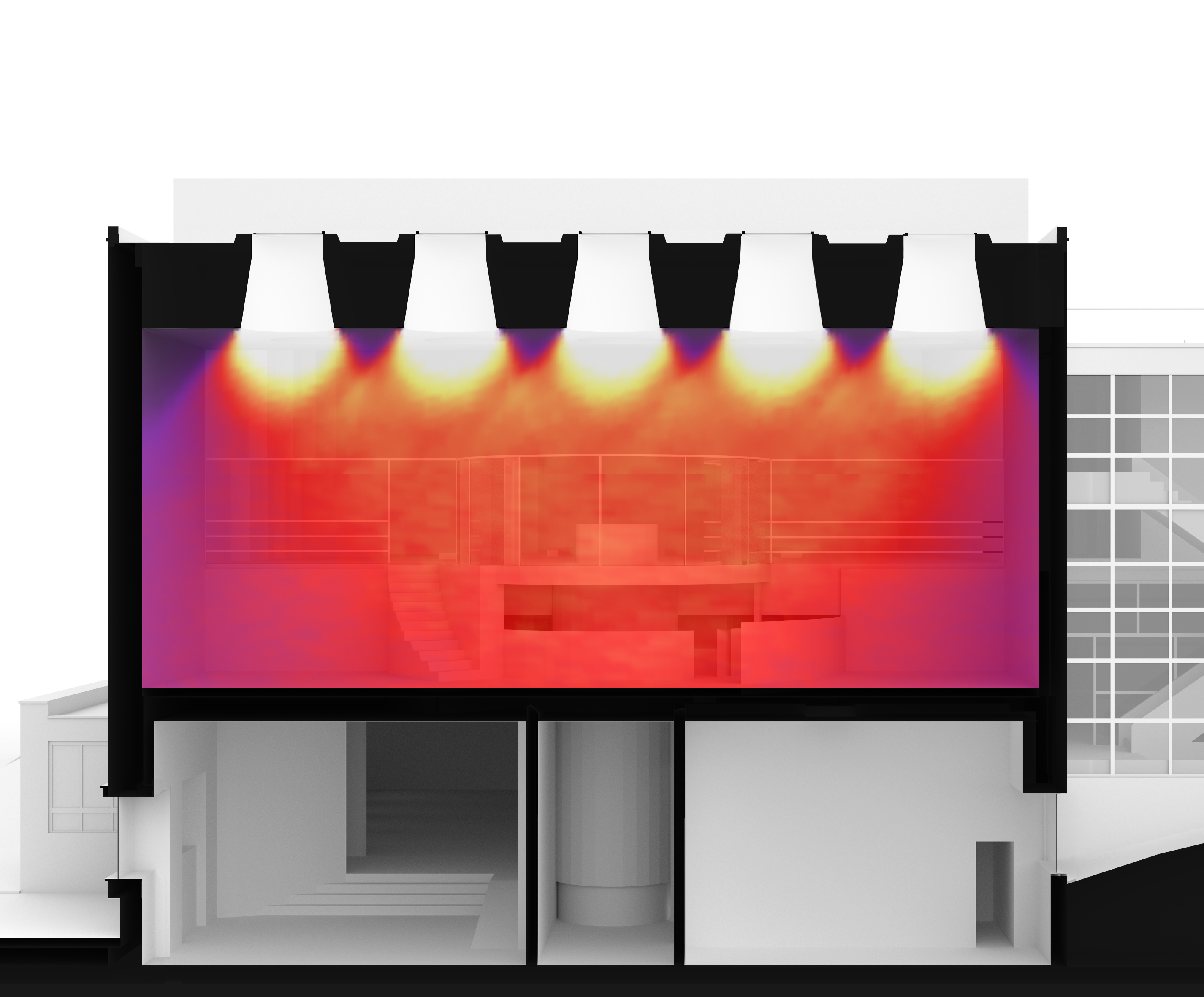

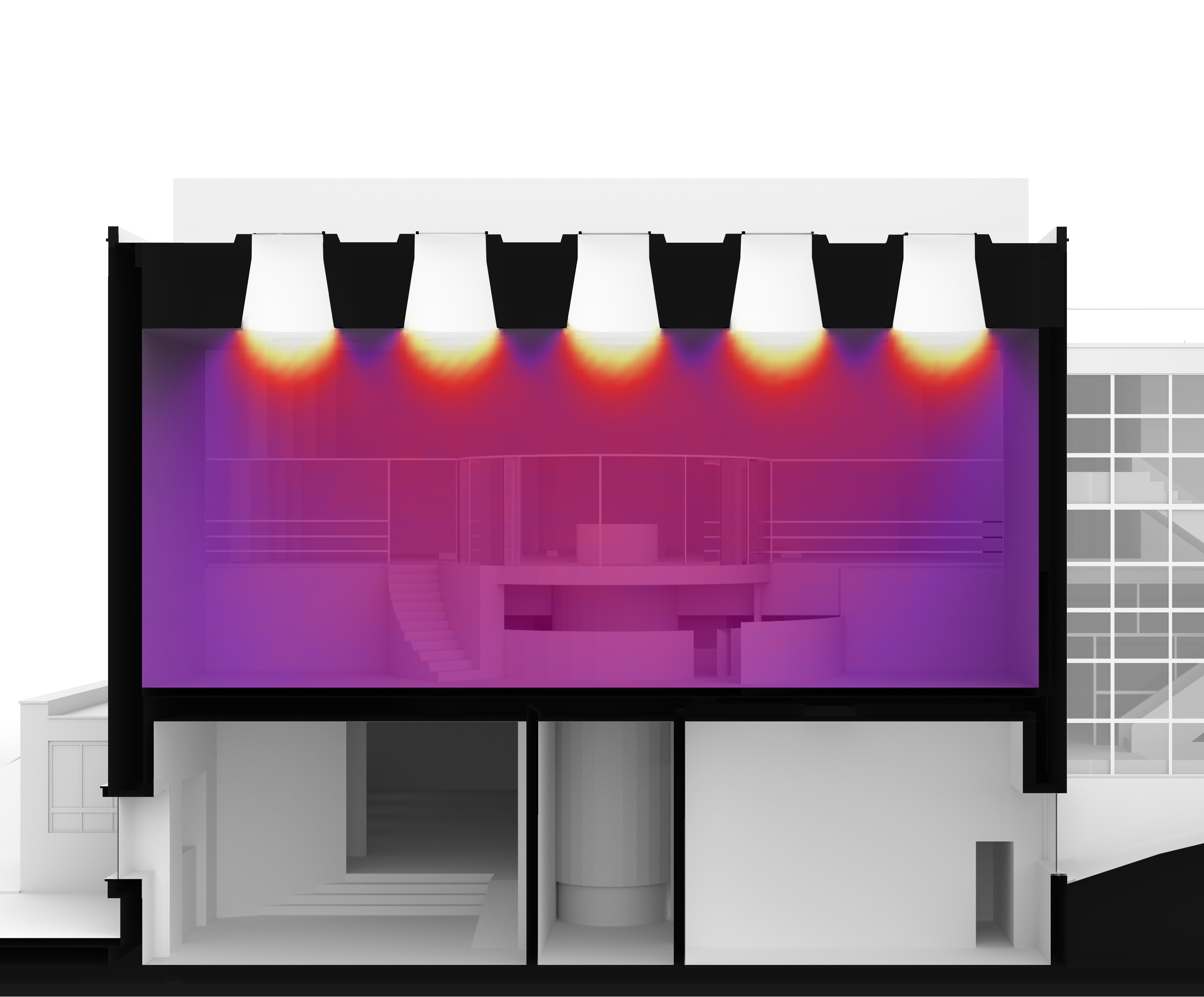

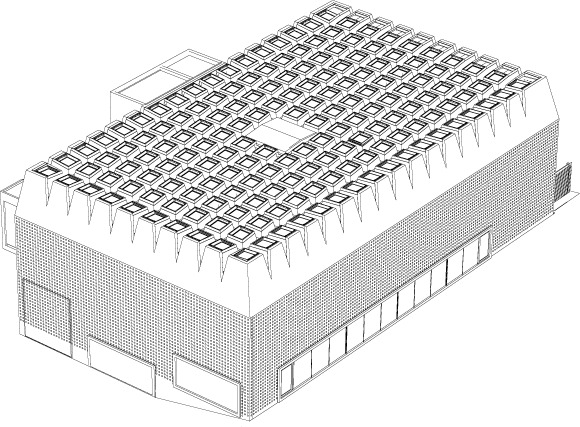
Liljevalchs Konsthall / Gert Wingårdh (59° Latitude)
Architect, Gert Wingårdh’s, addition to the Liljevalchs Art Gallery in Stockholm provides an interesting variation on the typology of architectural top lighting. Like Viipuri, the ambition is to provide a diffuse daylight while limiting direct sun to the room below. Again, a series of repeating skylight modules is used (2). But in Liljevalchs, Windgårdh has made use of a system of interconnected rectilinear lightwells where two of the shaft’s four sides tilt outwards towards the bottom of the aperture at an angle of 24° from the vertical. The result is a shaft which is symmetrical across the diagonal in a single direction. Whereas the skylights of Viippuri have just the depth needed to halt the passage of the direct beam, Liljevalchs’ skylights are higher than they are wide. At the top of the skylight, the width is less than half the height whereas at the bottom the opening is approximately 70% of the height. It is within this forced perspective towards the sky, the direct beam asserts itself as an array of matching shapes shifting with time of day and season. These fingers of light wait patiently, searching for passage to the room below. Finally, for a few hours around midsummer, they find their way within. This is possible because of the skylight’s rectilinear rather than circular geometry. There is an additional layer of subtlety, however. Within the shaft itself, the direct beam is, through reflection, decomposed to diffuse light. Beyond the uniform blanket of this diffuse light, the skylight’s asymmetry gives birth to a secondary directed light. Exiting light overlaps and merges with light from its neighboring module to give a soft yet discernable downward directed light. Reshaped and transformed, sunlight has become something else. This overlapping of light echoes throughout the lower half of the room. This occurs as long as there is daylight (3). Seasonal variation is considerable but less than with Viipuri, with noon at the summer solstice having around 20 times the magnitude of light, and at equinox around six times the light of that which is available in midwinter. While daylight levels between the two buildings are surprisingly similar, in Liljevalchs the seasonal rise and fall of uniform light is reinforced by the presence of the direct beam supplemented by an intricate secondary redistribution of reflected light. It is a diffuse light to meet the functional requirements of an art gallery yes, but also a light where the direct beam is patterned to serve reminder of the ongoing passage of time.
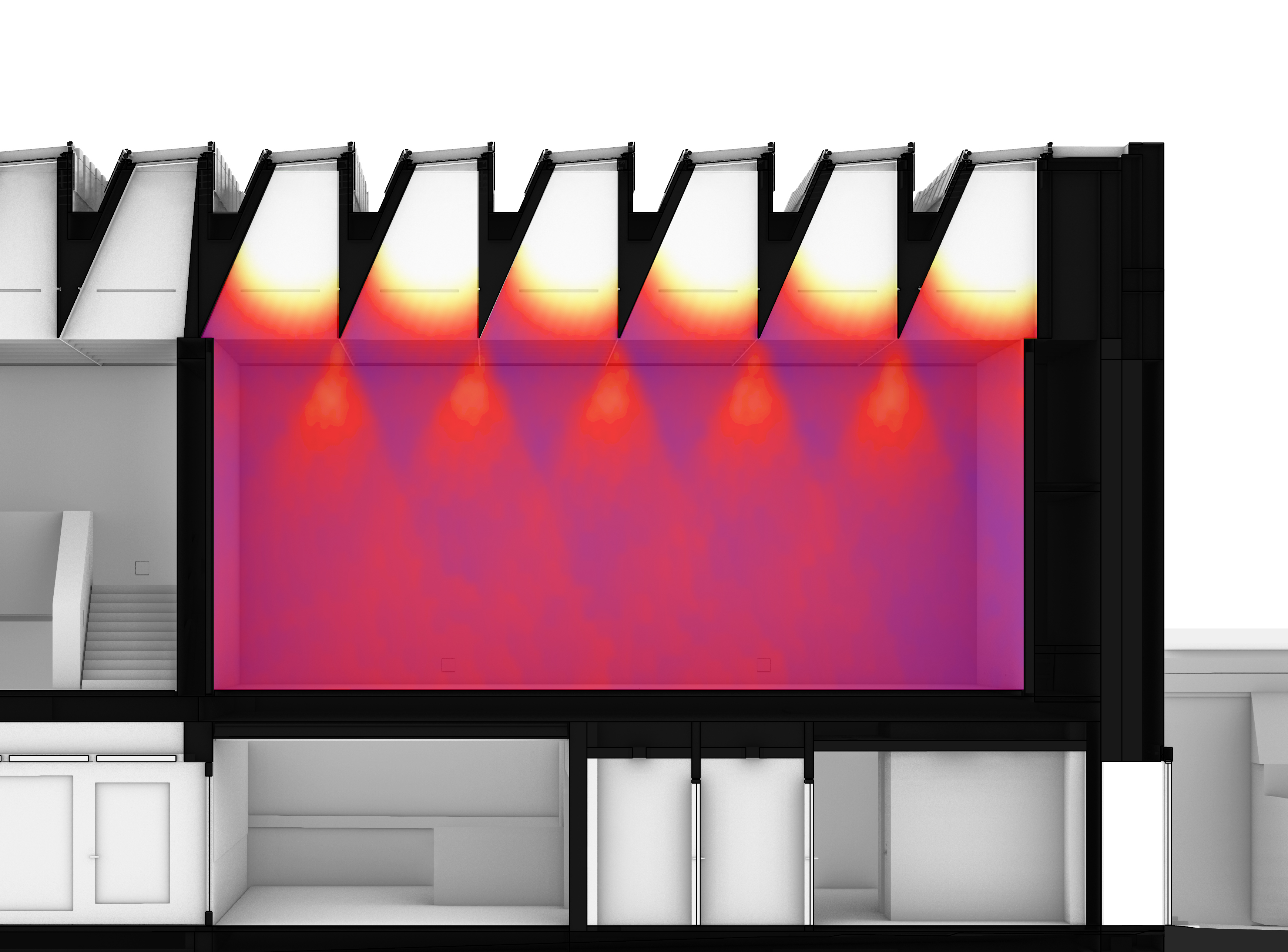

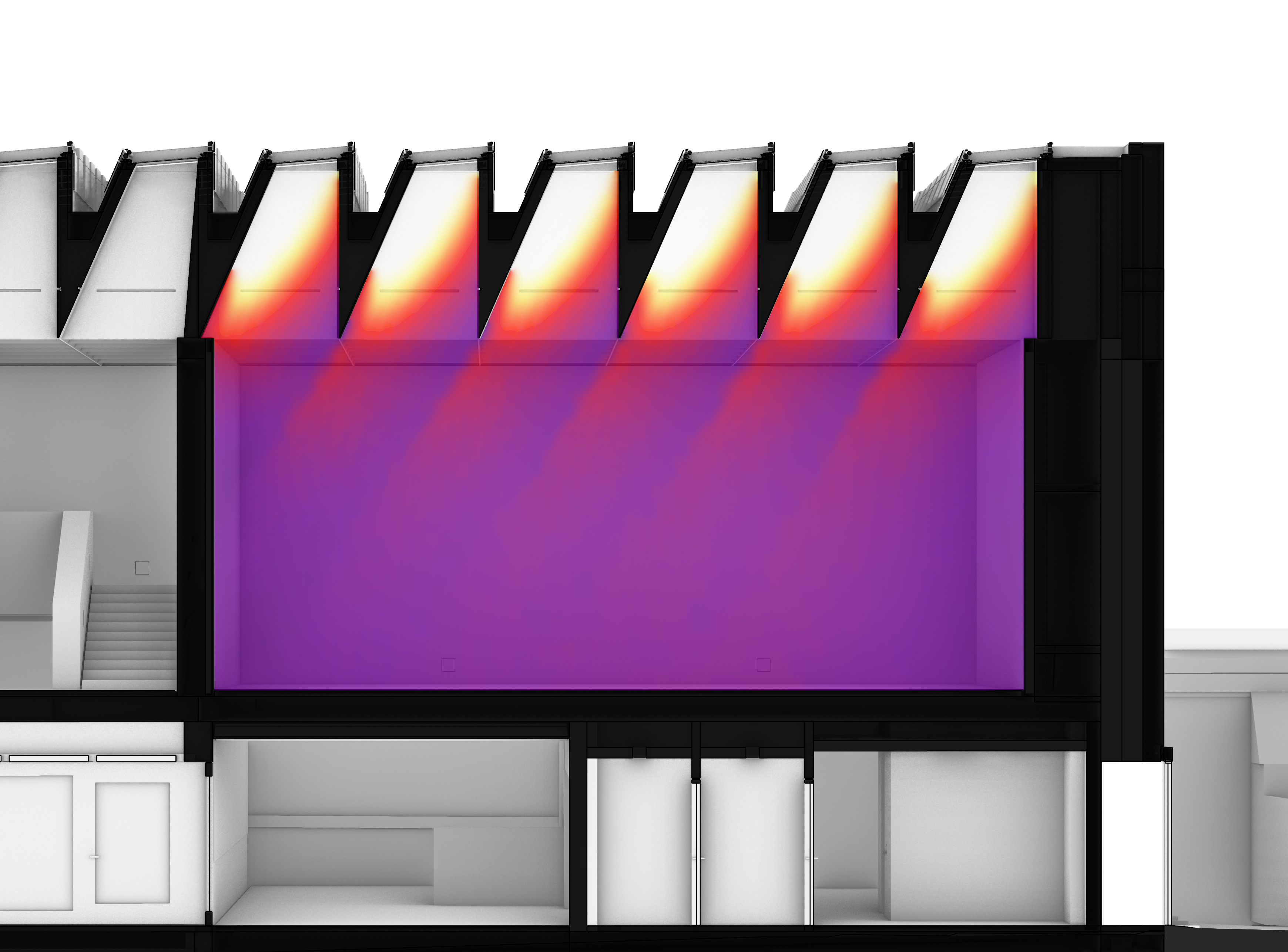

Summary
Simulation technology allows us to see phenomena which would otherwise remain hidden. In this case, the results from a few point-in-time visualisations show the invisible; the passage of light through space. While these images demonstrate variation of magnitude and spatial distribution of light for just a few fleeting moments, they also give a rudimentary understanding of the intimate relationship of light to both architectural form and the progression of hour and season. In this manner, a unique daylight signature, specific to each of the buildings is revealed. These signatures are so much more than mere expression of individuality. Rather, when viewed as a whole, they extend beyond architecture itself to provide a glimpse into our profound connection with the heavens… a secret that is truly worth revealing.
ACKNOWLEDGEMENTS
The author would like to acknowledge the contribution of his colleagues from ACC Glass and Facade Consultants in the development of this article: Angel Perez Morata, Eftychia Stamataki and Pedro Ajenjo.
FOOTNOTES
(1) Vippuri & Liljevalchs: To accommodate the wide range of magnitude of daylight with season, the images for the summer solstice have had an upper limit of 7500 lux applied whereas the equinox images have an upper limit of 1500 lux. This has been done to best be able to show the distribution of light within the space during different times of the year.
(2) Liljevalchs: While there is some subtle variation in the slope of the glass at the top of the aperture of each of the modules this is without noticeable effect on the pattern or mangitude of light below.
(3) Liljevalchs: Due to functional constraints of an art gallery, each skylight is equipped with two separate operable roller blinds. The first of these is completely opaque (for black out purposes) and the second a solar shading fabric with approximately 3% openness factor. The blinds are often deployed for light sensitive exhibitions but the ‘downlighting’ effect mentioned above is often apparent even when the latter of these two types of blinds is deployed.
